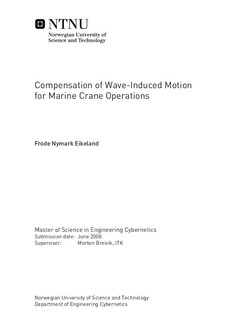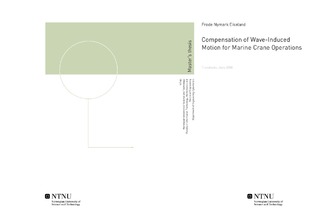| dc.description.abstract | Most of the systems considering wave synchronization in the literature are concerned with moon pool operations. The objective of this thesis is to transition the existing knowledge from some of that work into marine cranes working over the side of the vessel. This aim is mainly motivated by the fact that cranes working over the side of the vessel are more versatile. They can be used for more comprehensive and differently shaped objects. In addition, vessels with cranes mounted this way are more flexible since the moon pool configuration consumes a considerable amount of deck space. The main contribution of this thesis is a consideration of the transition from cranes lifting through a moon pool to cranes lifting over the side of the vessel. This includes consideration of the roll and pitch motion of the vessel, as well as simulating the complete system with wave synchronization control. The system is also simulated without any motion compensation for comparison. The degrees of freedom (DOFs) available for motion compensation control in different crane configurations are discussed, and some comments are made on how the actuators may cooperate in order to achieve better motion compensation. It is found that nothing obstructs the use of control algorithms originally developed for moon pool cranes for cranes working over the side of a vessel. The behaviour of the systems is roughly equal in the two cases, and the physical aspects are the same regarding wave elevation, still water level, and wire behaviour. There is however, one aspect to consider when designing overboard cranes, and that is the response time needed for following the wave elevation with the payload. When the payload is lifted over the side of the vessel, the roll and pitch motions affect the movement of the crane tip. In the worst case scenario, a wave can have a velocity directed upward, while the crane tip has a velocity directed downward. If this is the case, a faster motion compensation system is needed than for the moon pool applications. | nb_NO |

